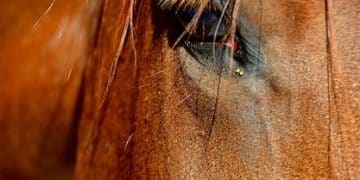Avian Flock Dynamics: Predict Bird Behavior by Group Size & Movement

Avian flock dynamics involves predicting bird behavior based on group size and movement patterns, revealing insights into social interactions, predator avoidance, and resource utilization.
Have you ever wondered how birds coordinate their movements in seemingly perfect unison? The study of avian flock dynamics: predicting bird behavior based on group size and movement patterns, provides fascinating insights into the complex social interactions and survival strategies of these creatures.
Understanding avian flock dynamics
Avian flock dynamics is the study of how bird flocks form, move, and interact with each other. It combines elements of biology, physics, and computer science to understand the underlying principles that govern flocking behavior.
Why do birds flock?
Birds flock for several reasons, including increased protection from predators, improved foraging efficiency, and enhanced social interactions. Flocking allows birds to share information, coordinate movements, and respond quickly to threats and opportunities.
Flocking offers safety in numbers. Predators find it more difficult to target a single bird in a large, moving group. The “many eyes” effect allows the flock to detect predators earlier, giving the birds more time to react. Additionally, the coordinated movements of the flock can confuse predators, making it harder for them to single out a target.
Key elements of avian flock dynamics
Several key elements influence avian flock dynamics, including:
- Group Size: Flocks can range from a few birds to thousands, depending on the species and environmental conditions.
- Movement Patterns: These include speed, direction, and coordination within the flock.
- Social Interactions: Birds interact with each other through visual, auditory, and tactile signals.
- Environmental Factors: Factors like weather, topography, and resource availability play a role in flocking behavior.
In summary, the study of avian flock dynamics offers a glimpse into the intricate social lives of birds, providing valuable insights into their survival strategies and ecological roles.

Predicting bird behavior based on group size
Group size is a critical factor in determining bird behavior within a flock. Different flock sizes offer unique advantages and challenges for the birds involved.
Small flocks: intimate and efficient
Small flocks, typically consisting of a few individuals to a few dozen birds, offer a more intimate social environment. Birds in small flocks often have stronger social bonds and greater awareness of each other’s movements and intentions.
Small groups can coordinate more seamlessly, making foraging more efficient. Each member benefits from the collective knowledge and experience of the group, leading to better resource utilization.
Large flocks: safety and information
Large flocks, comprising hundreds or even thousands of birds, offer increased safety from predators. With more eyes watching, the chances of detecting and responding to threats increase significantly.
The information sharing is also enhanced in larger flocks. Birds can quickly spread information about food sources, danger, and other relevant factors. This collective intelligence enables large flocks to adapt to changing environmental conditions and make informed decisions about where to go and what to do.
The relationship between group size and behavior
The size of a bird flock directly impacts its behavior. Smaller flocks focus on efficiency and strengthen social bonds, while larger flocks prioritize safety and maximize information sharing. Understanding group size is crucial for predicting how birds will behave in different situations.
Ultimately, predicting bird behavior necessitates understanding the interplay between flock size and the specific behavioral strategies associated with varied numbers of birds.
Movement patterns within avian flocks
Movement patterns within avian flocks are defined by their speed, direction, and coordination. These movements can range from simple formations to complex, synchronized maneuvers designed to optimize safety and efficiency.
Coordination and synchronization
Coordination and synchronization are crucial for maintaining flock cohesion and optimizing group performance. Birds achieve this through visual cues, auditory signals, and a keen sense of spatial awareness.
Studies have shown that birds in flocks follow a set of simple rules that govern their movements. These rules include maintaining a certain distance from neighbors, aligning with the direction of the group, and avoiding collisions. By following these rules, birds are able to coordinate their movements and create complex, synchronized displays.
Types of movement patterns
There are several distinct types of movement patterns observed in avian flocks:
- Linear Formations: These are typically used for long-distance migration. Birds align themselves in a line or V-shape to reduce drag and conserve energy.
- Circular Formations: These are often used for foraging or roosting. Birds form a circle to concentrate their search for food or create a communal roost.
- Murmurations: These complex, swirling patterns are created by large flocks of starlings. The birds move in a highly coordinated fashion, creating mesmerizing displays that are thought to confuse predators.
- Evasive Maneuvers: When threatened by a predator, flocks may engage in synchronized evasive maneuvers, such as sudden changes in direction or speed. These maneuvers make it difficult for the predator to target a single bird.
Understanding the various types of movement patterns and the coordination strategies employed by birds is essential for predicting their behavior.

The role of social interactions
Social interactions play a critical role in avian flock dynamics. Birds communicate with each other through visual, auditory, and tactile signals, which influence their behavior and maintain flock cohesion.
Communication within flocks
Within flocks, birds use a variety of communication methods, including calls, songs, and body language. These signals convey information about food sources, predators, and social status.
Visual cues are particularly important for maintaining coordination within flocks. Birds watch their neighbors and adjust their movements accordingly. Likewise, specific calls are used to signal danger, attract mates, or coordinate foraging efforts.
- Visual Signals: Body posture, wing movements, and feather displays.
- Auditory Signals: Calls, songs, and alarm cries.
- Tactile Signals: Preening, allopreening, and physical contact.
Dominance hierarchies
Dominance hierarchies often exist within bird flocks, influencing access to food, mates, and preferred roosting sites. Higher-ranking birds may have priority access to resources, while lower-ranking birds must defer to their superiors.
Social interactions, dominance behaviors, and communication strategies all contribute to the overall dynamics of avian flocks, affecting how they function and adapt to their environment.
Environmental factors affecting flock behavior
Environmental factors such as weather, topography, and resource availability significantly affect avian flock behavior. Birds adjust their flocking strategies to optimize survival and reproduction in response to these conditions.
Weather conditions
Weather conditions can have a strong impact on flocking behavior. For example, birds may form larger flocks during harsh weather to conserve energy and protect themselves from the elements.
During migration, birds often adjust their flight paths and altitudes in response to wind patterns, temperature gradients, and precipitation. They may also seek shelter in flocks to reduce exposure to extreme weather conditions.
Topography and habitat
The topography and habitat also influence flocking behavior. Birds may prefer to form flocks in open areas where they can easily spot predators or in dense vegetation that provides cover and foraging opportunities.
Resource availability, such as food and water, can also affect flock size and composition. Birds may form larger flocks when resources are abundant or disperse into smaller groups when resources are scarce.
Resource availability
The availability of resources like food and water is a critical factor in avian flock dynamics. When resources are plentiful, flocks can grow larger as birds congregate to take advantage of the abundance.
Conversely, during periods of resource scarcity, flocks may fragment into smaller groups to reduce competition and increase their chances of finding sufficient sustenance. The behavioral flexibility in response to varying environmental conditions is a key aspect of avian survival.
Conservation implications
Understanding avian flock dynamics has important conservation implications. By studying the factors that influence flocking behavior, researchers can develop effective strategies for protecting bird populations and their habitats.
Habitat preservation and restoration
Habitat preservation and restoration are critical for maintaining healthy bird populations. Protecting key foraging, roosting, and breeding areas ensures that birds have the resources they need to survive and thrive.
Conservation efforts may include establishing protected areas, restoring degraded habitats, and managing human activities to minimize disturbance to bird flocks. Likewise, conservation initiatives focused on preserving and restoring habitats can directly benefit flocking species by ensuring the availability of crucial resources and minimizing the impacts of habitat loss and degradation.
Mitigating human impacts
Human activities, such as urbanization, agriculture, and pollution, can have significant impacts on bird flocks. Mitigating these impacts is essential for ensuring the long-term survival of bird populations.
Strategies for mitigating human impacts may include reducing pesticide use, minimizing light pollution, and implementing bird-friendly building designs.
Monitoring flock dynamics
Monitoring flock dynamics can provide valuable insights into the health and status of bird populations. Tracking changes in flock size, movement patterns, and social interactions can help researchers identify potential threats and assess the effectiveness of conservation measures.
The study of avian flock dynamics: predicting bird behavior based on group size and movement patterns not only enhances our understanding of these complex systems, but also provides the knowledge needed to protect and conserve bird populations worldwide.
| Key Point | Brief Description |
|---|---|
| 🛡️ Safety in Numbers | Larger flocks offer better protection against predators. |
| 🧭 Coordinated Movements | Birds maintain cohesion through visual and auditory signals. |
| 🌦️ Environmental Impact | Weather and habitat influence flock size and behavior. |
| 📢 Communication | Birds use signals for food, danger, and social status. |
Frequently Asked Questions
▼
Avian flock dynamics is the study of how bird flocks form, move, and interact, blending biology, physics, and computer science to understand their collective behavior.
▼
Birds flock for enhanced safety from predators, improved foraging efficiency, and increased social interaction, leveraging collective intelligence for survival.
▼
Group size significantly impacts behavior; smaller flocks prioritize coordination and social bonds, while larger flocks focus on safety and information sharing.
▼
Common patterns include linear formations for migration, circular formations for foraging, and murmurations for predator evasion, each serving specific purposes.
▼
Understanding flock dynamics informs conservation strategies, such as habitat preservation and mitigating human impacts, to protect bird populations effectively.
Conclusion
The study of avian flock dynamics: predicting bird behavior based on group size and movement patterns offers valuable insights into the complex social lives and survival strategies of birds, providing a foundation for effective conservation efforts.




